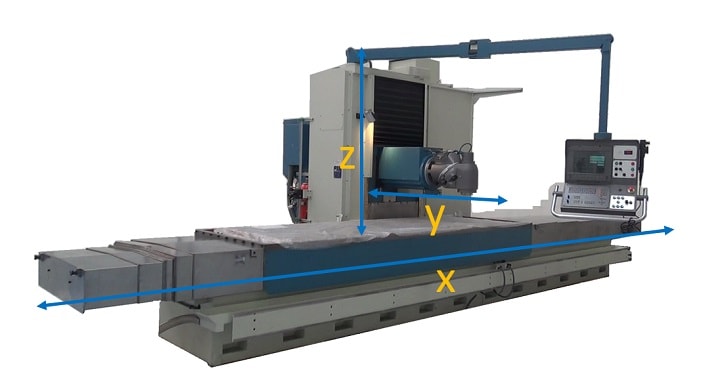How a CNC milling machine works
CNC milling machines have revolutionised industrial machining thanks to their precision and automation. In this article, we explain how a CNC milling machine works and why it is essential in today’s manufacturing processes.

What is a CNC milling machine?
A milling machine is a machine tool with a horizontal or vertical axis, designed to create parts through a machining process using a rotating cutting tool known as a milling cutter.
Unlike a conventional milling machine, the CNC version uses an automated control system that follows programmed G-code instructions, ensuring exceptional precision and repeatability.
Thereby, a CNC milling machine is capable to control the movement of 3 or more axes simultaneously by means of electronic signals regulated and coordinated by a numerical control software. Once being programmed, it executes them sequentially and automatically, producing the machining of the part under the supervision of the technician, who does not need to intervene in the machining process.
Step-by-step: How a CNC milling machine works
In the particular case of a bed type milling machine, the 3 axes movements which are controlled by the CNC are as follows:
- X axis: Moves the working table in both directions, being the clamping surface of the part.
- Y axis: Transverse movement regulating the depth of the ram.
- Z axis: Vertical movement that varies the height of the ram and framework from the working table.
To fully understand how a CNC milling machine works, it is essential to know its main components. If you would like to learn more about this topic, we recommend reading our article on the parts of a CNC milling machine, where we explain the function of each component in detail.
Frequently asked questions about how a CNC milling machine works
What is the difference between a conventional milling machine and a CNC machine?
A conventional machine requires manual operation, whereas a CNC machine automates movements through software control.
What maintenance does a CNC milling machine need?
It should be cleaned regularly, the guides lubricated, the spindles checked, and the sensors calibrated.
What materials can a CNC milling machine work with?
A milling machine can be used on a wide range of materials. It is commonly applied to metals such as steel and bronze, but also to wood, plastics, and other solid materials.
Is it difficult to learn how to use a CNC milling machine?
With proper training and practice, operating a CNC machine becomes accessible. Simulators and training programs make the learning process much easier.
The introduction of Computerized Numerical Control (CNC) in industrial machinery, such as milling machines, has incorporated programmable automation into production and enabled movements that would otherwise be impossible to perform manually. This translates into greater productivity, precision, safety, speed, repeatability, and flexibility, as well as a reduction in waste.
If you would like more information or advice about CNC milling machines, please contact our specialised team.
